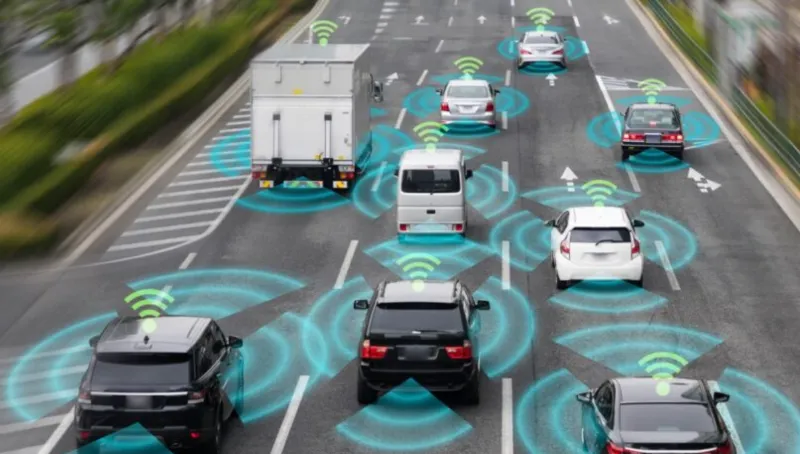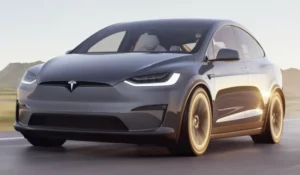Future Directions: Autonomous Vehicles and the Evolution of the Automotive Industry. Henry Ford pioneered the assembly line production method in the early twentieth century, revolutionizing mass production and making automobiles more inexpensive and accessible to the general public. Ford’s Model T, debuted in 1908, became a symbol of the age, ushering in the automobile industry’s transformation from luxury to a more widespread mode of transportation.
Throughout the twentieth century, the automobile industry underwent fast expansion and witnessed landmarks such as the introduction of safety features, advances in fuel efficiency, and the adoption of automation and computerization in vehicles. The industry has also seen cultural upheavals, such as the popularity of muscle cars in the 1960s and 1970s and the recent increase in desire for ecologically friendly vehicles.
The automotive sector is undergoing considerable transformation in the twenty-first century. Technological breakthroughs such as electric vehicles, self-driving vehicles, and linked autos are altering the industry environment. Electric vehicles are gaining popularity as a more environmentally friendly and sustainable alternative to traditional internal combustion engines, while autonomous driving technology holds the promise of safer and more efficient transportation.

The automotive sector, a pillar of technological progress, is on the verge of a new era. Autonomous vehicles (AVs), which were long considered science fiction, are rapidly becoming a reality. As traditional vehicles evolve into mobile computers, the path to complete autonomy promises huge implications for safety, mobility, and the economy. If you’re having trouble getting around during this transitional phase, remember to contact Fulcrum Suspension for wheel alignment and other maintenance services. This article delves further into autonomous vehicles and their importance in the growth of the automobile industry.
Understanding Autonomous Vehicles: Autonomy Levels
Autonomous vehicles (AVs) are a collection of complicated systems that work together to drive without human intervention. This is not to say that all autonomous vehicles are the same; the degree of autonomy can vary substantially. The Society of Automotive Engineers (SAE) has defined six degrees of driving automation, ranging from Level 0 (no automation) to Level 5 (full automation) to give clarity. Level 2 and Level 3 vehicles with capabilities such as adaptive cruise control, lane-keeping, and self-parking are currently on the market. According to the Boston Consulting Group, approximately 12 million fully autonomous vehicles could be marketed globally every year by 2035.
The Impact of Policy and Regulation on the Future of AVs
Government policy and regulation will be critical in influencing the future of self-driving cars. Policies that encourage R&D, infrastructure development, and consumer adoption can hasten the transition to AVs.
Simultaneously, rules are required to assure safety, safeguard consumer rights, and address ethical concerns. Policymakers’ job is to achieve a balance between supporting innovation and guaranteeing public safety and trust. The interaction of technology and politics will be a critical driver of the trajectory of the autonomous car revolution.

Economic and Environmental Benefits: A Win-Win Situation
Autonomous vehicles could provide significant economic benefits. According to Intel, self-driving automobiles might create a $7 trillion worldwide economic opportunity by 2050. This statistic includes both direct revenue from AV sales and indirect revenue from the creation of new services and jobs in the AV ecosystem. On the environmental front, AVs are predicted to be mostly electric, resulting in significant reductions in greenhouse gas emissions. Furthermore, autonomous vehicles can contribute to energy efficiency by optimizing routes and reducing congestion.
The Driving Forces: Artificial Intelligence and Sensor Technology
The twin pillars enabling the development of autonomous cars are artificial intelligence (AI) and sensor technologies. AI systems process sensor data, allowing vehicles to comprehend their surroundings, make judgments, and navigate the highways. Cameras, radar, LiDAR, and ultrasonic sensors are common components of a sensor suite, with each contributing to a full picture of the vehicle’s surroundings. The capabilities of autonomous vehicles continue to develop as these technologies advance.

First and foremost, AVs have the potential to reduce accidents.
One of the most persuasive reasons in favor of self-driving cars is their potential to increase road safety. According to the National Highway transportation Safety Administration, human error is a factor in around 94% of transportation accidents. AVs could drastically reduce accidents by removing human error, saving lives and lowering injury-related expenses.
Also Read: The 15 Most Amazing Electric Vehicle Designs
The Revolutionary Effect on Urban Planning and Real Estate
The introduction of self-driving cars will have far-reaching repercussions for urban planning and real estate. From motorways to parking lots, cityscapes have been planned with automobiles in mind. The use of AVs, particularly shared ones, may reduce the requirement for parking places in city centers, freeing up large quantities of space for other use. Furthermore, autonomous vehicles may have an impact on real estate by altering commute patterns. People may be ready to reside further away from city centers as autonomous vehicles make commuting more comfortable and productive, potentially leading to a shift in real estate values.
Roadblocks Ahead: AV Adoption Challenges
Despite the potential of self-driving cars, various hurdles must be overcome. These include technological challenges, regulatory concerns, and public acceptance. The requirement for significant real-world testing, ethical considerations in AI decision-making, and cybersecurity concerns are major obstacles. However, with continued study and development, these difficulties are gradually being addressed.
As the autonomous car era approaches, it is evident that the consequences will be far-reaching, affecting not only the automotive industry but society as a whole. Regular car maintenance is vital for a comfortable ride as we navigate this fascinating yet hard adventure.
To summarize, autonomous vehicles represent an exciting frontier in the automobile industry, with the potential to alter safety, mobility, economy, and the environment. The path to full autonomy is filled with difficulties, but with the unrelenting speed of technical improvement, a future in which automobiles drive themselves is not only plausible—it is unavoidable. As we observe this evolution, it is critical that our vehicles remain in top condition, ready to face the future. Contacting pros for top-tier services like wheel alignment will help you stay on track in this volatile landscape. As we travel into the future, the horizon of possibilities expands, ushering in an exciting new chapter in the tale of human movement.


